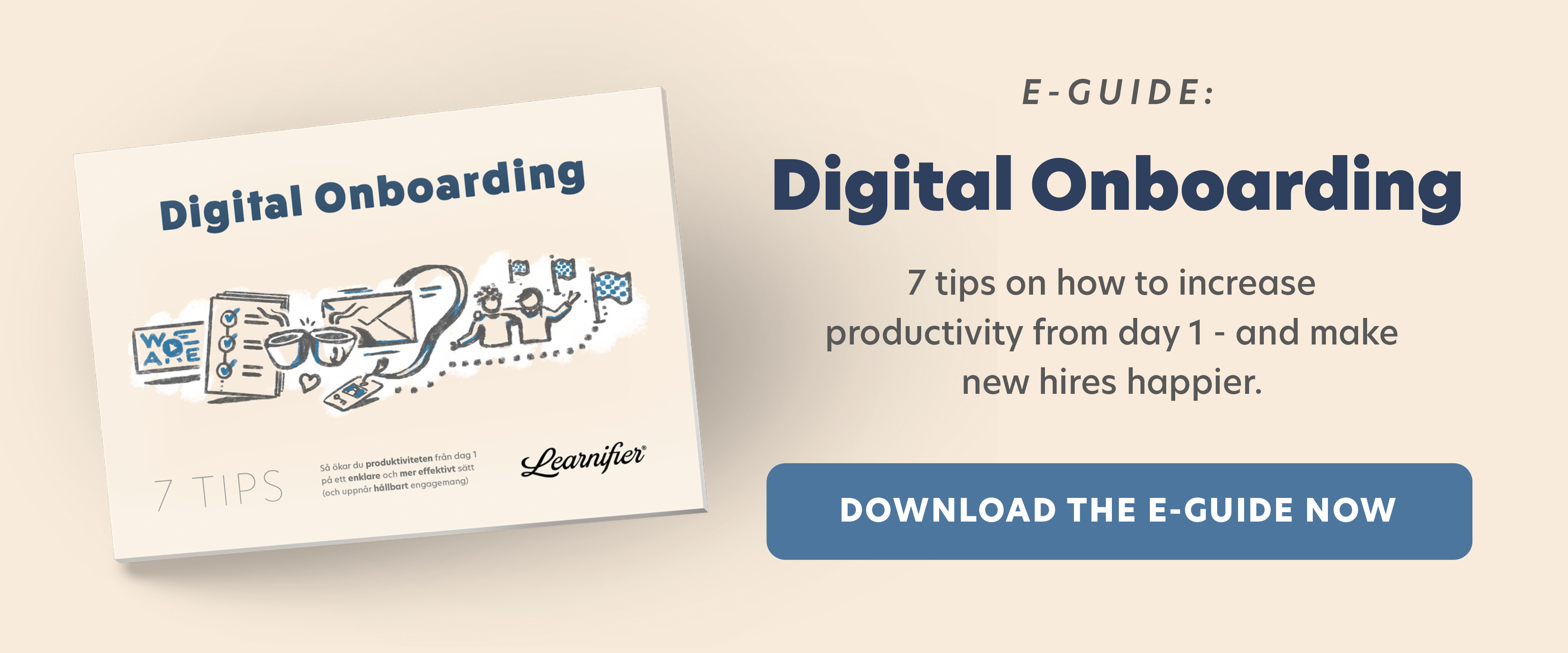Here are 3 steps that will move you forward:
1. Present Why Your Onboarding Program Will Be Beneficial - For Your New Recruit
Firstly, the reason why you want to implement a successful onboarding program is to benefit the company’s new employees. Think back and recall the last time you were the new employee. Share your vision on how new colleagues could have a more rewarding and less challenging transition into the team. Chances are your senior colleagues remember the same struggles and would like to help implementing a productive onboarding process. When pitching the idea to the rest organization really emphasize the impact that your onboarding program will create. Start by involving one or two employees and have them share their onboarding experiences and ideas on improvement. Convince your co-workers by communicating the needs of the new hires and how your onboarding program will meet these needs.
For example, when entering a new workplace your new colleague needs three things: Knowledge, relationships, and feedback. He or she will need knowledge about the organisational structure but also their own role and function, individually and in relation to the team. According to the Harvard Business Review knowledge about the company’s culture is the most critical for the new recruit to understand, but unfortunately the most neglected to convey by the hiring manager. The new hire also needs relationships as this will enable them to feel comfortable enough to ask for help, take risks and work well in teams. Thirdly, a new recruit needs feedback, consistently. It is difficult to track progress without the feedback of an objective observant. Feedback will also help the new hire be clear on what direction he or she should be aiming to grow and develop.
To get buy-in for your idea, communicate these specific needs to the rest of the organization but more importantly, how the program will impact the new employees. This should inspire them to want to be part of it!
2. Present Why Your Onboarding Program Will Be Beneficial - For Your Colleagues
So, you have established a well-thought-out onboarding program with a clear structure. Now, the next step is to present it to your colleagues, in a way that shows how it is beneficial to them and the organization in general. Luckily, an effective onboarding program means a long list of benefits! Firstly, it perfectly ties in with other Employer Branding activities. A successful plan for onboarding will ease your new recruit into their new job, help him or her to more rapid understand your product and services, processes and approaches which will get them up and running faster. A smooth transition into the workforce will also foster a healthy relationship, create stronger internal networks among employees and reduce the risk of any future miscommunication among them. All in all, this ensures a productive work environment where well-integrated teams get more done and have more fun.
3.Present Why Your Onboarding Program Will Be Beneficial - For Your Hiring Manager
We’ve all heard managers implying that management is taking too much time. But the most important task for a manager is to assure their team members got the prerequisites needed to get the daily job done. Putting together an onboarding program will initially require time and effort. New processes and formulas need to be set up, but once the program is prepared you got a template sustainable over time. So onboarding future employees will definitely be a much smoother process saving both money and time. Just imagine how many hours this frees up for the hiring manager to coach face-to-face instead. Furthermore, having a well-planned onboarding, including colleagues from other parts of the organization, will ease the pressure on the hiring manager to be the only one answering questions from the new employee. Your new employee’s development from rookie to senior will be a lot faster once you got a substantial onboarding program set up!
Keep It Simple And Delegate Efficiently
You are now at the stage where you have created a good onboarding program and you have successfully pitched it to the whole office. Now the remaining question is: Who is doing what? Although your colleagues are positive towards the new changes, they might be hesitant towards actually implementing them, adding to their already full plate of work. Therefore, your job here is to delegate the job efficiently among the employees. What is the hiring manager supposed to do? What is HR in charge of? What is the responsibility of the senior colleagues? Write this down in the onboarding program, and communicate it clearly. Accept questions and view these as opportunities to clarify further. Many onboarding programs are unsuccessful when applied, unfortunately, because the employees are uninformed about their individual share of the onboarding process.
Also, make sure to make your new recruit aware of who to contact for what information. They should know who to reach out to for each situation they are faced with. A successful onboarding program is clear and simple, and informs all its participants about who is in charge of what.
.png?width=153&height=58&name=Learnifier%20TextLogo%20NearBlack%20-%20PNG%20MEDIUM%20-%20800px%20(2).png)






